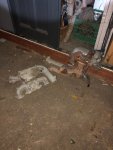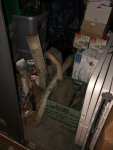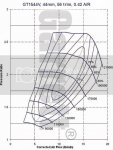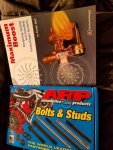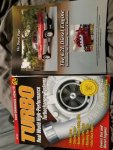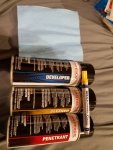Since this is a topic on turbochargers, a little terminology and info should be handy here. I've heard a few complaints on turbochargers with regards to this engine family. Namely turbo lag..which in all accounts is the wrong term. Most turbo systems are designed around a free floating or maximum power design, with or without a waste gate. The original Banks Sidewinder is free floating, factory 6.5 are free floating with waste gate. These attain boost at higher engine speeds, 2400 RPM and above, this isn't turbo lag but boost threshold. Remember, there is no throttle plate in a diesel so mass flow is solely engine speed before things happen to motivate the turbine.
Turbo lag is the result of turbocharger inertia to resist the effects of exhaust flow. In free float design, that would be opening fuel flow at RPM. The mass flow is already at the threshold value, the fuel adds just 1/15 more mass but what is added with fuel is enthalpy, energy which is heat, pressure waves and acoustics. This generates boost. Yes, with increased back pressure, known as drive pressure.
The GM 6.5 systems are a bit higher in drive pressure until boost level is reached. Still, threshold is high compared to modern diesels.
You can lower the threshold with smaller fixed geometry turbos, at the peril of drive pressure and intake choke. But who wants to drive a tractor? On a side note, the turbo lag is decreased but with mechanical injection pump turned up to use this boost, exhaust gas temperature will be excessive at higher engine speeds.
The modern solution is variable geometry turbines. All big three light trucks use them as well as all small road diesels. These work by changing the exhaust gas area in the turbine housing to match the required flow. Gone is turbo lag but also boost threshold is much lower. Yet at higher speeds, exhaust area is increased so drive pressure is lower.
These benefits are expensive. The variable geometry doubles the cost with increased part count plus the control system is usually digital..Chrysler is the only example of a pure pneumatic system in the CSX VNT and a few other models. These days, most variable geometry turbos use direct electronic control, earlier models use vacuum with a computer controlled valve to actuate the variable geometry.
A few gasoline engines use these turbos today, all are direct injected so they mimic the exhaust flow characteristics of a diesel, even though a spark is still needed. Ford's EcoBoost line is one example. They still are sensitive to exhaust gas heat.
The benefits are why I am going this route. I have a few ideas for control, from an Arduino computer ( I have the code, hardware and components) to a stand alone controller called a Digiboost. But that is a few hundred pounds Sterling and a trip over the pond. Now if only I didn't have this 65 hour a week distraction..it does pay the bills.



